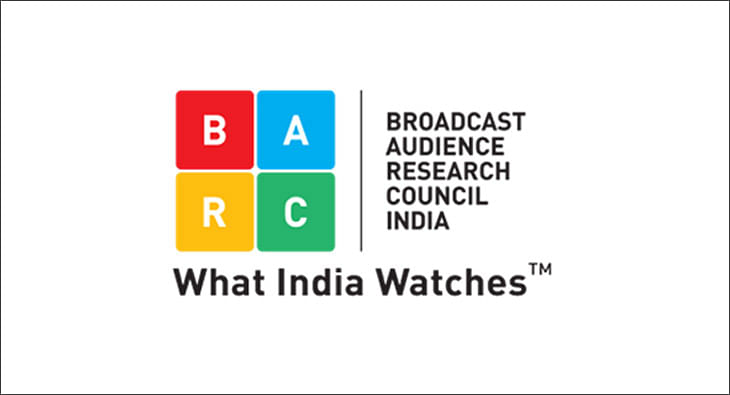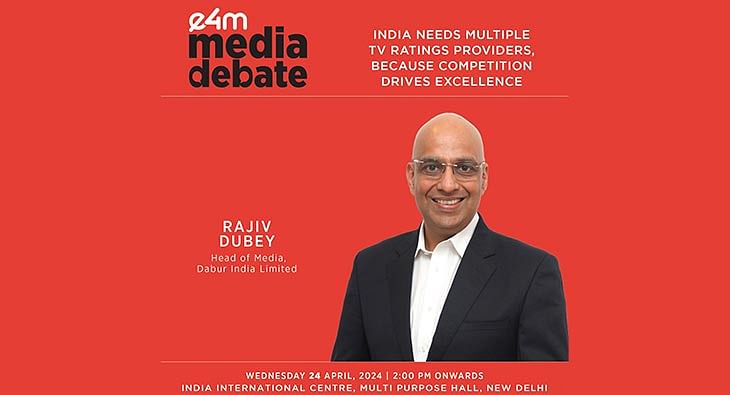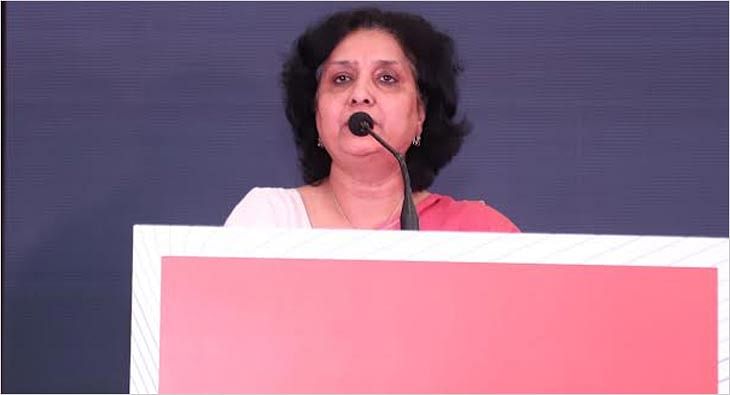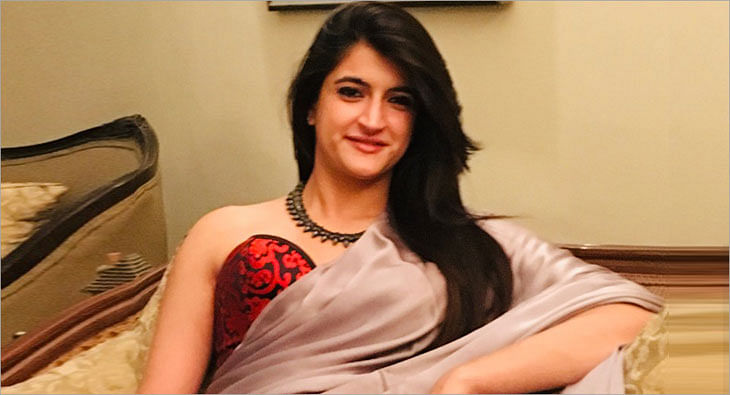TV ad volumes saw double-digit growth in 2021 over previous 2 years: BARC
2021 recorded an all-time high of 1,824 million seconds of ad volumes - 22% and 18% growth over 2020 and 2019, respectively

2020 was a subdued year for television advertising, leading to a decline in total ad volumes across the year despite the record stay-at-home rise in viewership. BARC India’s latest THINK Report, 2021 – A Voluminous Year (Yearly Ad Volume Report 2021) says 2021 has bounced back with a substantial double-digit spike, delivering an all-time high of 1,824 million seconds of Ad Volumes during the year. This translated into a 22% and 18% growth over 2020 and 2019, respectively. The Top 10 advertisers accounted for 780 million seconds of Ad Volumes, and the Next 40 accounted for 340 million seconds.
FMCG brands continued to lead in share across categories and Hindi channels continued to dominate across languages.
New advertisers and brands consistently jumped in throughout the year, thus playing an important role in the advertising volume growth witnessed throughout 2021.
Commenting on the report, Aaditya Pathak, Head – Client Partnership & Revenue Function, BARC India said, “2021 certainly brought in much needed cheer to the broadcast industry. The year started off on a positive note and also ended on a high with the festive quarter. Year on year, despite pandemic impediments, television has repeatedly proved effective for every penny spent for advertisers and brands. 2021 saw over 9000 advertisers turn to television with a significant number of new entrants. Overall, 2021 was a positive year for the industry as a whole that witnessed growing value for both advertisers and broadcasters.”
Advertisers & Brands Count
TV had a total of 9239 advertisers and 14616 brands advertised on the medium in 2021, of which, 49% i.e., 4483 were either new advertisers or returning ones. Similarly, for brands, 51% i.e., 7470 were new or returning brands.
Categories
The FMCG category continued to lead with an enormous share of 1117 million seconds of Ad Volumes in 2021, followed by E-commerce with 185 million seconds and Building, Industrial, & Land Materials/Equipments with 60 million seconds. Television also understandably continued to be an important medium for the Corporate Brand Image category which registered 2x growth over 2019 with 24 million seconds.
The E-commerce category had a total of 587 advertisers in 2021 of which, 65% were new entrants or earlier advertisers returning to TV in 2021, registering a growth of 51% over 2020 and 26% over 2019. Media/Entertainment/Social Media, Education, Online Shopping, Matrimonials and Financial Services were the top 5 sub-categories within Ecommerce. Ad Volumes for Education grew by 461% and Financial Services by 153% over 2020.
Languages
While Hindi continues to play a dominant part of the language mix, regional language channels recorded strong growth as well across 2021. Ad Volumes for Bhojpuri language channels doubled over 2019 and Punjabi, Marathi, Gujarati and Assamese language channels posted over 40% growth over 2019. South language channels i.e., Tamil, Telugu, Malayalam and Kannada, grew by 26% over 2020.
2021 - Quarterly Analysis
Q1 2021 kickstarted on a positive note having registered 24% growth over 2020 and 21% growth over 2019. Despite the sporadic and partial lockdowns on account of the second wave of COVID-19, Ad Volumes for Q2’ 21 were relatively higher at 417 million seconds as compared to Q2’19 which recorded 399 million seconds. Q4’21 brought in cheer for broadcasters with a bumper festive season that recorded 489 million seconds of Ad Volumes, the highest quarter ever. New advertisers continued to flock to television for effective communication with Q4’21 welcoming 2156 new advertiser or earlier ones returning to the medium, the highest for the year.
After a marginal decline in Q2 2021 on account of the lockdowns, regional language channels experienced steady growth in Q3 and Q4.
SD & HD Channels
Ad Volumes for HD channels in 2021 grew by 11% over the previous year and SD channels grew by 22% in 2021 over 2020 and by 20% over 2019.
TV Commercials
TV commercials with an Average Commercial Duration of under 30 seconds, were most favoured by advertisers while spots more than 60 seconds were least preferred. The Average Commercial Duration has been reducing Y-O-Y. The Prime-Time band, i.e., 20:00 hours to 24:00 hours enjoyed the maximum share of Ad Volumes at 27%. The share of Ad Volumes for the four time bands, viz 08:00 – 12:00 hrs, 12:00-16:00 hrs, 16:00-20:00 hrs and 20:00-24:00 hrs, continued to stay the same since 2019. TV Commercials in local languages on regional channels are consistently increasing since 2019.
IPL 2021
IPL 2021 registered a total of 1680 thousand seconds of Ad Volumes with 119 advertisers and 228 brands in all. There were 59 new advertisers and 158 new brands for the season. The Top 10 advertisers for the season contributed 35% of the Ad Volumes.
Tokyo Olympics
With 466 thousand seconds, Ad Volumes for the Tokyo Olympics were almost at par with Rio Olympics that was held in 2016. There were 34 advertisers and 61 brands that advertised during Tokyo Olympics. Significantly, 31% of the Ad Volumes during Tokyo Olympics featured Olympians.
Read more news about Television Media, Digital Media, Advertising India, Marketing News, PR and Corporate Communication News
For more updates, be socially connected with us onInstagram, LinkedIn, Twitter, Facebook Youtube, Whatsapp & Google News
The current ratings system lacks trust: Rabindra Narayan, PTC Network
During the recently held e4m media debate, Rabindra Narayan, MD and President, PTC Network, spoke for the need for multiple TV rating providers
The current system of ratings by BARC lacks trust and credibility, said Rabindra Narayan, MD and President, PTC Network, at the e4m debate on Wednesday while asserting the need for multiple rating agencies in the broadcast ecosystem.
The e4m media debate on ‘India needs multiple TV rating providers because competition drives excellence’, held in New Delhi, was chaired by Anurag Batra, Founder of e4m and Editor-in-Chief of Businessworld Media Group.
During the debate, Narayan, who was speaking for the motion with other panellists, questioned the Broadcast Audience Research Council (BARC) ratings, particularly for news channels saying that politicians spending money to advertise on news channels and not GECs, is proof enough that the genre is doing much better than the ratings given by BARC.
“The fact that we are having this discussion, implies that the current system lacks trust. It lacks credibility. BARC analyses only linear TV that is beamed and received through satellite and cable. TV viewing today is not just linear TV, it also has several forms like connected TV and Fast TV coming on the same screen but BARC is not measuring it,” he said.
Narayan further said that it was time to innovate and look at content rating rather than just television rating points.
“As per BARC, news genre reach is 6-7% in the entire country, if that is true then why are politicians eager to spend on advertising on news channels? Why not on GECs? Why all the money spent by advertisers to reach maximum consumers, based on this Bible (BARC) which is junk? Why are we fighting for TV rating points and not content rating points when the technology and the system is changing?
“The current system of ratings (by BARC) is flawed, biased as it is controlled by a handful of people. Broadcaster lobby is controlled by four business houses so it will always remain in their favour. The data shows it,” he argued.
In his concluding remarks, Narayan said that BARC needs to improve and for that it does not even need to invest in more meters than it already has because cable operators and DTH are now digitised.
“They don’t even need to invest more. They don’t even need more meters than the ones installed already because every cable operator is now digitised and has two-way addressable communication available,” he said.
e4m Media Debate 2024: Call for multiple ratings agencies to break monopoly
Industry players discussed the authority of the current ratings system and whether having multiple agencies will cause increased complexities, discrepancies and expenses
Indian TV news media and advertisers today rely solely on the data released by the Broadcast Audience Research Council (BARC) India to strategise media plans and budgets.
Hence, many suggest having multiple rating systems which will allow for a more nuanced understanding of viewership patterns across different demographics.
Rabindra Narayan, MD and President, PTC Network; Mona Jain, Chief Revenue Officer, Zee Media, and Karthik Sharma, Group CEO, Omnicom Media Group believe a multi-ratings system will drive excellence amidst competition.
On the other hand, multiple ratings systems may also present challenges such as increased complexity, potential discrepancies in ratings, and higher costs for broadcasters as well as advertisers.
The current system of ratings is “flawed” and “biased, as it is controlled by a handful of people,” was the view of the industry veterans who advocated the need for multiple rating agencies instead of just one, which is currently the BARC, saying “monopoly makes people complacent”
During the debate, things got intense when some of the panellists, who were speaking for the motion, questioned BARC ratings, particularly for news channels saying that politicians spending money to advertise on news channels and not GECs, is proof enough that the genre is doing much better than the ratings given by BARC.
To present a viewpoint against the motion, Chintamani Rao, Strategic Marketing and Media Consultant, Rajiv Dubey, Head of Media, Dabur India, and Varun Kohli, Director and CEO, Bharat Express News Network joined the debate at e4m’s Media Debate in New Delhi. Dr. Annurag Batra, Chairman and Editor-in-Chief, BW Businessworld Media Group and Founder, e4m Group, chaired the debate.
Jain opened the discussion and said, “There is a dependency of an advertiser to take up a particular media plan via the agency. On the other hand, the broadcaster is absolutely at the mercy of the measurement system which decides where you rank. The issue is nobody looks at what the reality on ground is. Hence, I have started telling agencies and advertisers to also look at my digital platform’s ranking but the rating in BARC still holds significant value for them.”
She further suggested we should have an authenticated, validated, acknowledged currency which is recognised and valued by advertisers and agencies as well.
Presenting an opposing stand, Rao explained, “There many doubts about BARC and its functioning but I continue to maintain that audience measurement is no business of the government.”
At the end of the day, it is not about the number of vendors but how they are managed. Two poorly managed are not better than one, he added. The key issue is that BARC is dominated by one of its constituents and that is the one which is being measured.
“If advertiser’s money fuels the entire media ecosystem, why did they accept a structure with Indian Broadcasting & Digital Foundation (IBDF) at 60 percent?” questioned Rao.
Sharma, who joined virtually, expressed that if we forget the industry for a while, why do we need the NSE and BSE? Why do we need CIBIL and Experian? The short answer is innovation and competition. If there would be no competition, we would have one brand in every category we operate in.
“Even in a market like the USA, which has the largest AdEx market, there are two systems. Even the UK, Australia, Malaysia, Philippines and so many more countries have two audience measurement systems. In a largely populated country like India two systems will help in better sampling and segmentation,” he added.
Dubey took the stage right after and spoke about how one, two or multiple rating systems don’t matter to an advertiser. At the end of the day, it should help the brand sell. His objective is to reach out to the consumers in the cheapest possible manner.
“The idea of BARC was to have a robust system which could measure everyone well. Have we been able to do that? Probably yes or probably no,” he said.
With changing times, the audience needs have changed and NCCS was a system that measured the class of people based on the ownership of consumer durables. But now, the newly proposed ISEC fulfils those gaps.
Consumers have also started consuming content on different platforms, more towards digital and OTT. Dubey believes, “We haven’t been able to measure that audience correctly yet. Hence, the Indian TV industry needs one system and that system needs to be strengthened in such a way that it measures TV and digital audience equally.”
On having multiple audience measurement systems, the Dabur spokesperson said, “To solve the problem, you should not create another problem, but fix the problem instead.”
Narayan of PTC, who stood for the motion, expressed, “The fact that we are standing here and debating the issue, implies the current system lacks trust and credibility. We are also setting the premise that by TV ratings, we only mean linear TV ratings because that is what BARC does.”
He further shared that BARC does measurement via image mapping and hence, when any channel puts its watermark on any platform, it should become measurable for BARC since they already have the technology for it.
“Then why don't they? Because they need more focus on analysis, not more investment. The trouble is the ecosystem is not allowing the expansion of those ratings,” he added.
Today, BARC says 9 out of 100 people watch PTC, which is impossible and advertisers bargain for the ad rates accordingly. The channel today continues to invest in good shows but advertiser interest is low due to BARC’s data. If there is any truth to this, why wouldn’t players like PTC fight for multiple ratings systems?
“When Chandrayaan was launched, everyone in the world and India was watching it but if you see the BARC data, that particular week the ratings of the news genre went down. Is that even possible? News genre is much higher than what BARC is projecting,” Jain added.
Even on a day like the launch of Chandrayan, there was no spike on BARC data. Jain and Narayan both believe the current system is flawed and biased because it is controlled by a handful of people.
“The fact that we are having this discussion, implies that the current system lacks trust. It lacks credibility. BARC analyses only linear tv that is beamed and received through satellite and cable. TV viewing today is not just linear tv, it also has several forms like connected TV and Fast TV coming on the same screen but BARC is not measuring it,” Narayan said.
Narayan further said that it was time to innovate and look at content rating rather than just television rating points.
“As per BARC, news genre reach is 6-7% in the entire country, if that is true then why are politicians eager to spend on advertising on news channels? Why not on GECs? Why all the money spent by advertisers to reach maximum consumers, based on this Bible (BARC) which is junk? Why are we fighting for TV rating points and not content rating points when the technology and the system is changing?
“The current system of ratings (by BARC) is flawed, biased as it is controlled by a handful of people. Broadcaster lobby is controlled by four business houses so it will always remain in their favour. The data shows it,” he argued.
Kohli of Bharat Express, said, “BARC came into existence because publishers wanted a different rating system and then a mechanism was conceived. Now, questioning that system just because ratings aren’t in the right proportion or it doesn’t map digital audiences and to further ask for a separate body, I dont think is the right way.”
The industry needs to come together and exercise jurisdiction with BARC to tell them what more is needed and where they can get better, he suggested as a solution.
Rao also suggested it is better to have an aggregator rather than multiple players. In that case, the aggregator can also become the provider of data. BARC can always collect multiple data from various sources and present it.
The mapping of the audience correctly will also solve the problem in a way, which will be done with ISEC majorly. Having a unified measurement is also another solution, said Dubey.
According to Sharma, “Having more than one player will definitely fuel innovation and have a little competition, which is good. Different rating systems could also focus on different target segments, cohorts and more.”
“We need to focus on screens and not linear tv or digital. It is a screen-based world and people are just consuming content which is meaningful for them. So different types of consumptions require different types of measurements. My argument is innovation is critical as it is high time.
“Consumer is looking at the screen through mobile or TV sets. How are we measuring it? Some competition is healthy. It is important to have a mindset of how one system can help the other. The current system is not wrong but the newer system can enhance what we have,” he said.
Narayan concluded, “Television viewing and consumption has changed. Either BARC grows up to the changing times or others should come in and fill the gap. The market forces will decide who will remain and who will go, whose data is authentic and whose is not. There is no need for a debate here.”












 Share
Share